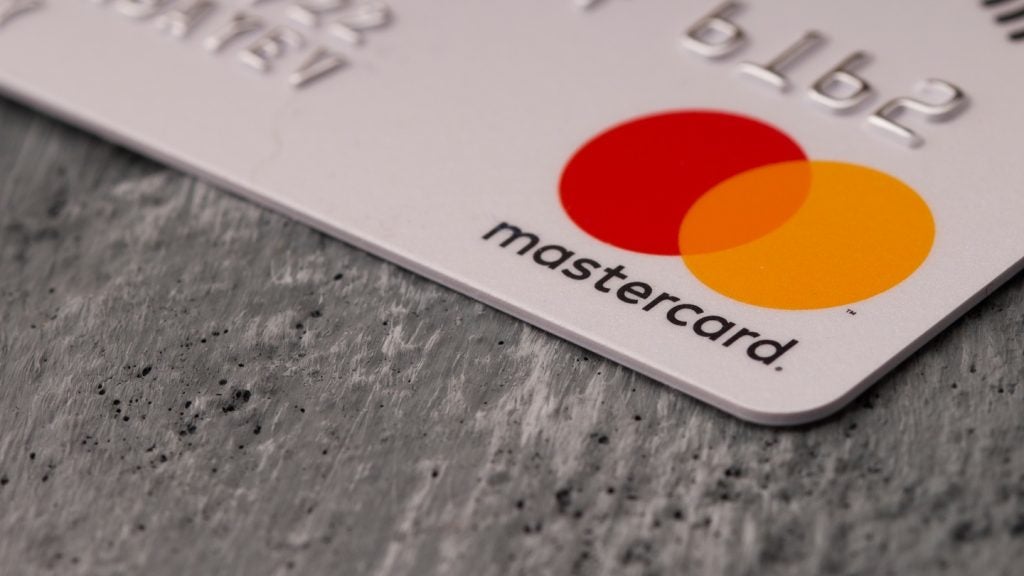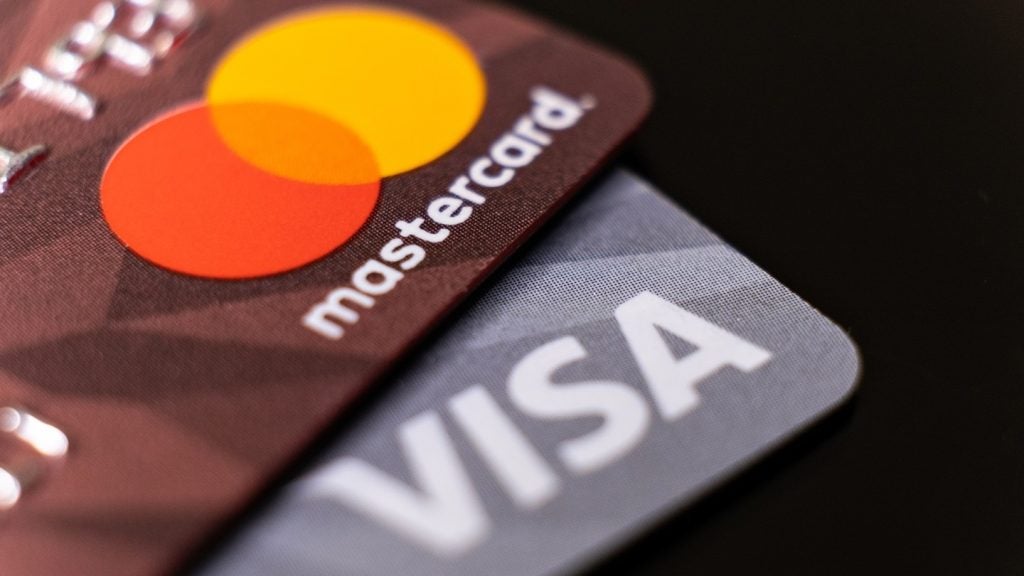Canadian credit card borrowing has risen sharply recently, and the Bank of Canada has warned that rising household debt creates vulnerabilities for the country’s financial system. Robin Arnfield reports.
“The Bank of Canada (BoC) has been flagging the issue of elevated household debt for some time in its bi-annual Financial System Review (FSR), published in June and December,” says a BoC spokesperson.

Access deeper industry intelligence
Experience unmatched clarity with a single platform that combines unique data, AI, and human expertise.
The BoC’s two FSRs in 2016 highlighted “the evolution of financial system vulnerabilities related to the high level of indebtedness of Canadian households and imbalances in certain housing markets.” Potentially unsustainable house price rises in cities such as Vancouver and Toronto have added to the risk factors for household borrowing in Canada.
The Bank for International Settlements (BIS) warned in September 2017 that there are early warning indicators in credit-to-GDP ratios signalling “vulnerabilities” in Canada. It added that the stresses to the Canadian banking system are linked to property price gaps above critical thresholds, a measure linked to overheated housing markets.
In March 2017, the Canadian Mortgage and Housing Corp., a government corporation, warned that the steady rise of Canada’s household debt-to-GDP level was putting Canada’s long-term economic growth prospects at risk.
Credit v. debit

US Tariffs are shifting - will you react or anticipate?
Don’t let policy changes catch you off guard. Stay proactive with real-time data and expert analysis.
By GlobalDataHistorically, Canadians have been heavy debit card users, but data from Canadian processor Moneris Solutions indicates that credit cards now dominate card spending in Canada. Moneris also says that cash spending is set to decline significantly, accounting for just 10% of spending by 2030.
According to the Canadian Bankers Association (CBA), as at 30 October 2016 there were 75.3 million MasterCard and Visa credit cards in circulation and 35.4 million credit card accounts with balances in Canada. In the year to 30 October 2016, net retail volume on these credit cards totalled C$419.8bn, up from C$390.7bn a year earlier.
The 90 days and over delinquency rate – representing the percentage of outstandings at the end of the fiscal year – rose from 0.8% in the year to 30 October 2016 to 0.95% a year later, the CBA said.
“In the past, we’ve seen debit card transactions moving to credit cards without debt levels increasing,” says a Moneris spokesperson. “We believe the consumer preference to use credit cards may be due to other reasons: collecting points and rewards, ease-of-use for contactless, and the overall decline in the use of cash in favour of electronic payments.”
Contactless
The convenience of contactless credit cards, which don’t require PIN entry, unlike contact-based cards, has contributed to the rise in credit card spending. “When contactless credit cards first appeared some years ago, they definitely replaced cash transactions,” says Christie Christelis, president of Canadian consultancy Technology Strategies International. “But now it’s more about people switching from contact-based to contactless card payments.”
While Canadian banks have been issuing contactless debit cards containing debit scheme Interac’s Flash contactless application, CI understands they have been doing so gradually, rather than a wholesale migration to contactless debit.
This means debit-preferred consumers wanting to make contactless payments must use contactless credit cards if their debit card is still contact-based. “But the percentage of contactless credit card transactions due to debit cardholders forced to do contactless credit card payments as they don’t yet have contactless debit cards, is small,” says Christelis.
The drawback for banks of offering customers the option of making contactless debit payments as well as contactless credit card payments is that they risk eroding their interchange on contactless credit card payments. In Canada, debit interchange is a fixed amount, while credit card interchange is ad valorem.
Mastercard took an early lead in contactless credit card payments in Canada, which meant that BMO Bank of Montreal, as a major Canadian MasterCard issuer, had to face this dilemma, Christelis says.
“Interac Flash is enabled on every new or replacement BMO debit card, but there may be some existing users with older contact-only cards since BMO didn’t force-issue new cards to every customer,” a BMO spokesperson says. “Since June 2016, BMO now has approximately 2.9m Interac Flash-enabled cards in the market, comprising 66.7% of our total debit cards.”
According to Visa Canada’s VisaNet data, there were 27 Visa payWave transactions per second in March 2017 in Canada, or one Visa payWave transaction every .04 seconds. In March 2017, Visa payWave transaction penetration for total domestic, face-to-face transactions was 41.7%, up from 31.1% in March 2016.
Canadian card spending data. Source: Moneris Solutions
| Quarter | Credit Share (%) | Debit Share (%) |
| Q2 2017 | 64.6 | 35.4 |
| Q1 2017 | 64.8 | 35.2 |
| Q4 2016 | 63.8 | 36.2 |
| Q3 2016 | 65 | 35 |
| Q2 2016 | 64.84 | 35.16 |
| Q1 2016 | 64.66 | 35.34 |
| Q4 2015 | 62.7 | 37.3 |
| Q3 2015 | 63 | 37 |
| Q2 2015 | 58.84 | 41.16 |
| Q1 2015 | 62.73 | 37.27 |
| Q4 2014 | 63.3 | 36.7 |
| Q3 2014 | 60.2 | 39.8 |
| Q2 2014 | 59.7 | 40.3 |
| Q1 2014 | 59.74 | 40.26 |
Borrowing data
Government agency Statistics Canada’s data indicates that in Q2 2017, household credit market debt as a proportion of household disposable income (excluding pension entitlements) increased from 166.6% in Q1 2017 to 167.8%, as household income (+1.2%) rose more slowly than household credit market debt (+1.9%). This means that in Q2 2017 there was C$1.68 in credit market debt for every dollar of household disposable income.
According to Equifax Canada’s 2017 Q2 National Consumer Credit Trends Report, total Canadian consumer debt (including mortgages) climbed 6.2% to $1.8trn nationally from $1.67tn in Q2 2016.
“Even in the face of potential interest rate increases, consumers across Canada continue to borrow and spend to some degree,” Regina Malina, Equifax Canada’s senior director of data and analytics, said in a statement. “Their overall ability to pay back this money on time remains stable, though. As interest rates gradually rise, and borrowing costs increase, this trend may be impacted over time.”
Equifax notes that Canadian delinquency rates, which were already low, are moving in the right direction nationwide compared to previous trends. In Q2 2017, the average consumer debt (excluding mortgages), increased to C$22,595 and the overall delinquency rate fell to 1.09%.
The BoC’s Banking and Financial Statistics September 2017 report says that in Q2 2017 credit card debt was up 5.4% to C$106.8bn from C$101.3bn in Q2 106, while mortgages rose by 7.3% during the same period to C$1.18tn from C$1.11tn. Compared to Q2 2012, credit card debt was up 29% in Q2 2017, while mortgages were up 34% in the same period
Concern
“We’ve been seeing a big rise in credit card borrowing,” says Christelis. “There’s a lot of concern about this. But, as a percentage of credit card spending volumes, credit card borrowing has stabilised in the past few years. Credit card debt seems to be hanging around 21-22% of total credit card spending, which isn’t as alarming as it might seem to be.”
But Christelis says credit card borrowing should be viewed in terms of macroeconomic factors, and he isn’t convinced by claims that the Canadian economy is set for significant growth.
“Some people are talking about 4.5% growth in Canada, and that isn’t at all likely,” he says. “I don’t see where this growth will come from. Canada has been in wonderland for the last 6 years due to low interest rates.
Currently, the Canadian debt-to-household income ratio is 170%, which isn’t critical yet. If the economy does increase by 4%, as some people think, interest rates will rise dramatically. But, if interest rates increase, this will kill the housing market, which has really been a driver for the Canadian economy.”
When the Canadian economy tanked in the last recession, consumers found it very hard to get credit cards. “Now banks are pretty much giving credit cards away,” Christelis says. “People do realise they will be paying 20% or whatever on credit card loans.
“But, if they see sharp rises in interest charges on their mortgages or lines of credit, this will make it hard for them to pay credit card interest. If you’re faced with paying your credit card interest or your mortgage, which will you pay?”
Q&A with RBC
What credit/debit card payment trends has RBC seen among its Canadian customers?
Our clients consistently say they look for credit cards offering great benefits that are relevant to them – like earning loyalty points redeemable for rewards suiting their tastes and lifestyle. We know Canadians like being rewarded for using their credit card for everyday expenditures in exchange for travel, merchandise, etc.
The growth of our retail cards portfolio is very strong, and the most recent Nilson data puts RBC again as number one in purchase volume in Canada.
Has RBC noticed a significant growth trend in Canadian customers moving from cash to debit/credit cards?
The recent changes in the payments industry have accelerated with the advent of mobile and contactless card payments. In addition to the added convenience of new payment methods, our clients increasingly look to be rewarded for their loyalty.
The changes shaping the rewards space today directly impact the experience customers receive from their program. RBC is continuously bringing personalised, flexible and innovative products, programmes and innovations that meet our clients’ needs.
We’ve increasingly noticed merchants are starting to offer more payment options, which further supports the increase in credit card usage.
Has RBC seen contactless credit card payments take a greater share of cash payments in Canada?
We continue to see growth in contactless payments. We’re strong proponents of providing clients with the ability to choose how they pay and providing convenient solutions to support their payments needs.







